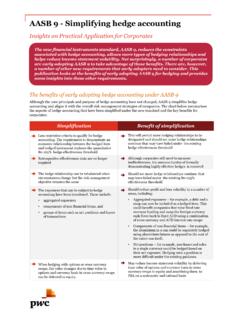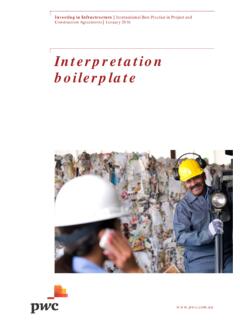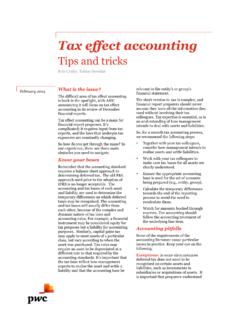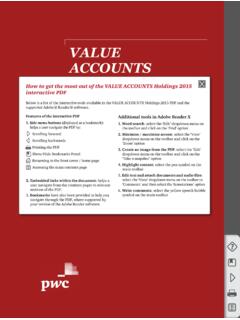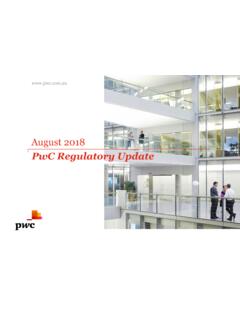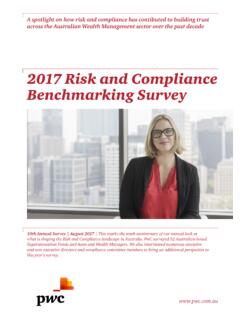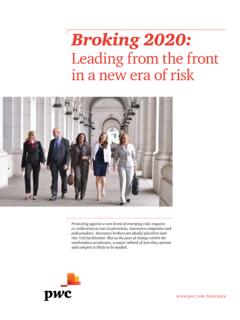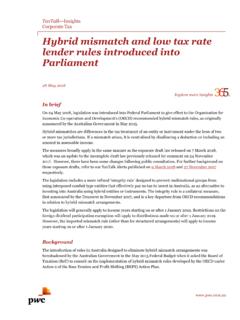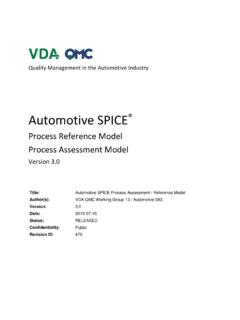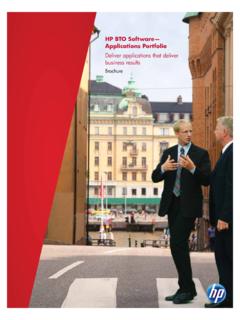Transcription of The benefits from a cost perspective are clear and often ...
1 The benefits from a cost perspective are clear and often form the major driver for the initial adoption of RPA but what about the risks? | March Process Automation friend or foe for your risk profile?PwC | Robotic Process Automation | 2 What is Robotic Process Automation?Robotic Process Automation (RPA) is the automation of processes using technology and involves the use of software robots that are easy to configure, require little IT expertise and can be quickly trained and deployed to automate manual tasks.
2 They differ from traditional software by working at the user interface level, replicating the exact actions a human user would take and creating, in effect, a virtual BPO. Activities might include performing double data entry, copying and pasting data between computer systems, reconciling and cross-referencing data between different systems and implementing high-level decision making at key points along the business | Robotic Process Automation | 2 What s new about it? Many of the principles within RPA have had a long history, such as basic screen scraping.
3 We are seeing increasing interest in RPA with recent advances in the underlying technologies improving stability and scalability. The RPA market has started to move beyond the basic rule based processing to RPA that taps into unstructured data and intelligence through content analytics and process automation. In an environment where there is pressure to digitise operations, RPA enables rapid implementation, delivering significant and sustainable value in short timeframes as it can be incorporated into an organisation s legacy systems and manual processes.
4 Who will benefit from it? And why?Organisations of varying scale, size and structure can leverage RPA to streamline and automate specific manual processes. The benefits of improved customer experience, cost reduction and increased speed to market are clearly communicated, and increasingly supported by early adopters but there is little focus on two other potential benefits , risk reduction and improved compliance assuming you get your RPA implementation | Robotic Process Automation | 3 Why can t my core systems replace the manual workarounds rather than RPA?
5 This is a common question as RPA it is just another form of software with inbuilt rules and procedures, like any core IT system. However, RPA seeks to automate the many manual processes that a human user has to do to work around software gaps or defects that span multiple systems. These workarounds have often been created as core IT systems have been unable to keep pace with the changing business needs ( regulatory requirements or new products) due to the high investment cost and time required. In addition, the challenges of delivering IT projects often leads to implementations with lower quality as budgets and timeframes get compressed.
6 The acceptance of manual processes to work around known software defects becomes the new normal as there is often no budget or accountability to fix these post go-live . These manual workarounds continue and consume increasing resources as the business scales and needs | Robotic Process Automation | 4 Automation of manual steps to mitigate riskRegulatory and compliance requirements for businesses continue to increase. The response to meeting these requirements too often involves piecemeal IT system changes with reliance on manual workarounds to process high volumes of information.
7 Manual entry relies on the diligence and attention to detail of often junior or low skilled employees. Failures in processing result in inaccurate data and reporting. Small errors in data quality over the past number of years have resulted in large spend on remediation programs responding to increased regulatory scrutiny and interventions. However, too often the remediation effort focuses on the symptoms rather than fully addressing the root cause of the issue: the manual nature of the tasks and the natural variability in human behaviour.
8 The automated nature of RPA can ensure a high level of compliance. The APRA Prudential Practice Guide CPG 235 Managing Data Risk principle notes that automation (where viable) is used as an alternative to manual processes . Unlike humans, who may skip a process step, or not be consistent in the processing of a transaction, the robot performs the task without bias or any variation. This gives support to the automation agenda to manage and minimise risk. In addition, for those tasks where humans are making repetitive simple decisions based on data or criteria, RPA has the ability to perform these types of exception management tasks.
9 Most of the time, the scenarios people are faced with to execute these exception processes are limited in quantity. As long as the decision matrices can be documented, RPA can handle them and significantly relieve the repetitive burden and risk of error from the human resources performing these tasks. Implemented correctly, RPA can support consistent application of rules and adherence to control frameworks for decision making as the robots are programmed to follow the standard operating procedure and hence perform the task in exactly the same way, every single time.
10 Training costs of compliance drop substantially with RPA as well, as RPA allows for precise process execution without the ongoing effort and cost of training a human workforce. PwC | Robotic Process Automation | 5 Given that RPA is an emerging technology in the service industries, there are no standards or formally agreed upon industry controls specific to RPA. Indeed, this has been given little focus to date as the drivers have been around cost reduction and the adoption has been modest to date in South East Asia.
